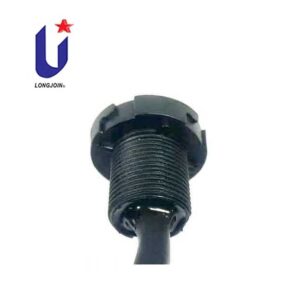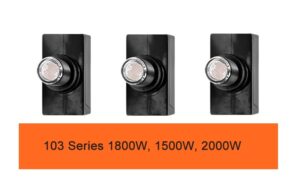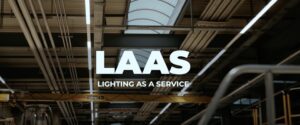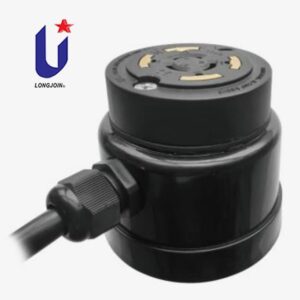Visão técnica sobre a evolução do controle de iluminação inteligente: desvendando o controlador Zhaga JL-712A2H e seu papel na iluminação externa do futuro
Introduzir
A iluminação inteligente evoluiu. Não se trata mais apenas de ligar ou desligar as luzes. Agora, trata-se de detectar, adaptar e otimizar seu uso. Controlador Zhaga JL-712A2H, desenvolvido por Junção longa, está no centro dessa transformação. Ela vai além do controle tradicional de fotocélulas, combinando sensor de luz e radar de micro-ondas em uma única unidade inteligente. O resultado? Um sistema de iluminação externa mais inteligente, responsivo e energeticamente eficiente.
Neste artigo, exploraremos tudo sobre o JL-712A2H. Se você atua no setor de iluminação ou está planejando um projeto de infraestrutura urbana, este controlador pode ser a solução definitiva para você.
O que torna o JL-712A2H diferente das fotocélulas tradicionais?
Nem todas as fotocélulas são criadas iguais. A maioria das unidades padrão funciona simplesmente detectando a escuridão para acionar a iluminação. Mas e se o seu sistema de iluminação pudesse pensar de forma mais inteligente, reagir mais rápido e economizar mais energia?
Sensores fotoelétricos tradicionais medem a luz ambiente. Eles usam essa leitura para ligar ou desligar as luzes. Funcionam bem para tarefas simples do anoitecer ao amanhecer. Mas têm dificuldades quando as condições mudam.
O JL-712A2H dá um salto à frente. Ele combina detecção de luz com sensor de movimento por micro-ondas para oferecer iluminação inteligente baseada em cenários. Pense nele como o cérebro do seu controlador automático de iluminação pública. Ele sabe quando está escuro e quando alguém está por perto.
Função | Fotocélula tradicional | Controlador Inteligente JL-712A2H |
Tipo de detecção | Somente luz | Movimento de luz + micro-ondas |
Tipo de controle | Ligado/Desligado | Escurecimento Adaptável + Movimento |
Faixa de aplicação | Iluminação externa básica | Cidades industriais, urbanas e inteligentes |
Nível de inteligência | Baixo | Alto |
Por que combinar detecção de luz e radar de micro-ondas?
Você pode ter experimentado um sensor de movimento padrão ao ar livre e se sentido decepcionado. Você não está sozinho. Muitos sensores tradicionais não conseguem lidar com ruídos ambientais como neblina, chuva ou barreiras de vidro. É aqui que a combinação de detecção de luz com radar de micro-ondas faz toda a diferença.
Sensores de luz detectam a luminosidade do ambiente. Eles são ótimos para determinar se é noite ou dia. Mas o que acontece quando está nublado ou com neblina? Ou quando você só precisa de luz quando há alguém por perto?
Radar de micro-ondas detectar movimento através da névoa e do vidro. Eles até sentem movimento através do plástico, algo Sensores infravermelhos passivos (PIR) sensores não conseguem fazer. Eles funcionam melhor em espaços abertos ao ar livre, como estradas ou parques industriais.
Tipo de sensor | Função | Beneficiar |
Sensor de luz | Detecção de luz ambiente | Iluminação do anoitecer ao amanhecer |
Radar de micro-ondas | Detecção de movimento via Efeito Doppler | Escurecimento acionado por movimento |
Sensor PIR | Detecção de movimento infravermelho | Área externa limitada, bloqueada por materiais |
Para qualquer projeto sério de iluminação pública com fotocélula, a combinação de ambos os sensores garante uma iluminação precisa, confiável e eficiente.
Como o JL-712A2H é configurado?
Configurar iluminação externa não deveria ser complicado e, definitivamente, não deveria exigir uma escada o tempo todo. É por isso que o JL-712A2H oferece configuração remota e descomplicada — uma grande vantagem para os técnicos.

O JL-712A2H resolve esse problema oferecendo configuração de controle remoto infravermelho. Os engenheiros podem configurar os horários de iluminação, os níveis de dimerização e a sensibilidade ao movimento do solo — a até 20 metros de distância. Isso é ideal para grandes instalações externas de iluminação pública.
As equipes de manutenção acham isso mais fácil. Isso reduz o tempo de serviço e os custos.
Quais são os principais recursos e seus benefícios no mundo real?
No controle de iluminação, os detalhes são importantes. Das opções de dimerização à impermeabilização, cada recurso desempenha um papel no desempenho geral. Veja o que o JL-712A2H oferece e por que isso importa.
Recurso | Valor técnico | Benefício no mundo real |
Detecção dupla (luz + micro-ondas) | Micro-ondas de 5,8 GHz + sensor fotográfico | Detecção confiável, controle de iluminação adaptável |
Configuração remota infravermelha | Alcance de 20 m, configuração multiparamétrica | Não há necessidade de abrir acessórios; ajustes de campo fáceis |
Suporte para escurecimento | Escurecimento analógico de 0–10 V | Funciona com todos os principais drivers de LED |
Lógica de trabalho | Brilho personalizado, tempo de espera, sensibilidade | Iluminação personalizada para ambientes específicos |
À prova d'água e ampla temperatura | IP66, -40°C a +70°C | Suporta condições industriais externas |
Onde você pode usar o JL-712A2H?
Um dos maiores pontos fortes do JL-712A2H é sua versatilidade. De ruas urbanas a parques industriais, ele foi projetado para funcionar onde quer que seja necessária uma iluminação confiável.
Este controlador de fotocélula inteligente não é apenas para vias urbanas. Seu design robusto e recursos inteligentes o tornam ideal para diversos casos de uso:
- Iluminação Pública: O brilho muda quando um carro passa. Também aumenta para quem passa.
- Pátios de Armazéns: A luz permanece apagada até que algo se aproxime. Ela só acende quando há uma empilhadeira ou uma pessoa por perto.
- Iluminação de parques:Permanece escuro até que alguém passe.
- Estacionamentos: Aumenta a segurança ao mesmo tempo que reduz o consumo constante de energia.
Ele leva o controle do sensor de iluminação fotocélula a um novo nível — combinando eficiência e segurança.
Quais padrões o JL-712A2H segue?
A infraestrutura de iluminação moderna deve seguir padrões internacionais para permanecer à prova do futuro. É por isso que a compatibilidade com sistemas como Livro Zhaga-18 é a chave.
O Livro Zhaga-18 O padrão está se tornando a referência global para sistemas modulares de iluminação externa. O JL-712A2H foi desenvolvido com base nisso, com compatibilidade plug-and-play.
Ele também está alinhado com o protocolo D4i, permitindo atualizações futuras como:
Isso transforma sua unidade de fotocélula em um nó sensor fotoelétrico — parte de um ecossistema de cidade inteligente mais amplo.
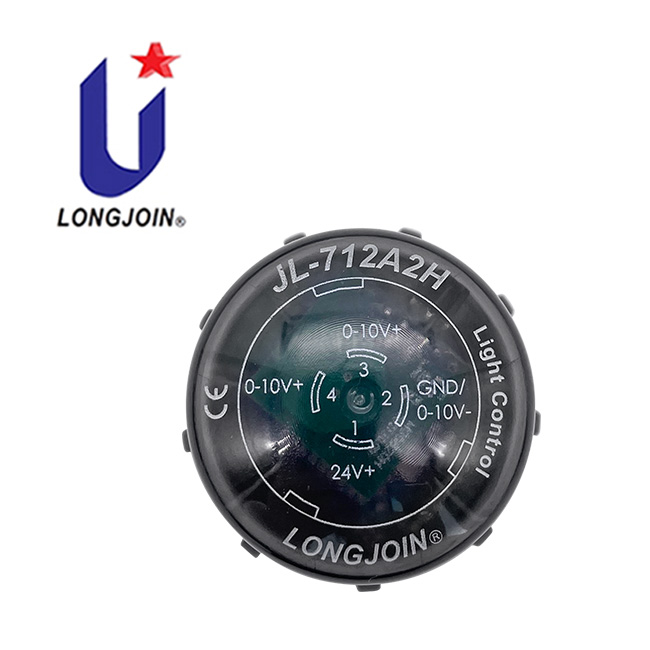
Por que escolher a Long-join como seu fabricante de fotocélulas?
Se você está buscando soluções de iluminação, precisa escolher o fabricante certo. Um bom fabricante importa tanto quanto o produto em si. A junção longa oferece desempenho e confiabilidade.
Eletrônicos Shanghai Long-join projeta controladores de iluminação há mais de 20 anos. Veja o que os diferencia:
Não importa se você precisa de um interruptor de luz fotoelétrico padrão ou de um sistema de sensor inteligente, a Long-join tem o histórico e a flexibilidade para entregar isso.
O que o futuro reserva para a tecnologia de fotocélulas?
A iluminação pública está entrando em uma era mais inteligente — e as fotocélulas estão evoluindo junto. Mas o que exatamente podemos esperar daqui para frente?
Com o surgimento das cidades inteligentes, espera-se que a iluminação se adapte em tempo real. Isso significa:
- Mais fusão de sensores(combinando luz + movimento + térmico)
- Controle descentralizado com computação de ponta
- Análise remota e detecção de falhas
Controladores como o JL-712A2H não são mais componentes passivos. São unidades de controle fotográfico ativas e com reconhecimento de dados, permitindo que cidades sejam mais inteligentes, ecológicas e seguras.
Considerações finais
Você não está apenas comprando um sensor — você está investindo em infraestrutura. O JL-712A2H oferece valor que vai muito além do controle básico do anoitecer ao amanhecer.
Se você quer algo mais do que um básico sensor fotocélula do crepúsculo ao amanhecerO JL-712A2H é uma solução preparada para o futuro. De postes de iluminação a zonas industriais, ele se adapta de forma inteligente, economiza energia e oferece desempenho confiável.
Combine isso com um robusto Soquete Zhaga e você tem um sistema de iluminação plug-and-play com inteligência.
Para explorar mais ou solicitar um orçamento, visite Catálogo de produtos da Long-join ou entre em contato conosco diretamente
Links externos:
●https://www.sciencedirect.com/topics/engineering/sensor-fusion
●https://environment.ec.europa.eu/topics/waste-and-recycling/rohs-directive_en
●https://www.assent.com/resources/knowledge-article/what-is-ce-certification/
●https://en.wikipedia.org/wiki/Narrowband_IoT
●https://www.digi.com/solutions/by-technology/zigbee-wireless-standard
●https://en.wikipedia.org/wiki/LoRa
●https://en.wikipedia.org/wiki/Doppler_effect
●https://en.wikipedia.org/wiki/Passive_infrared_sensor

